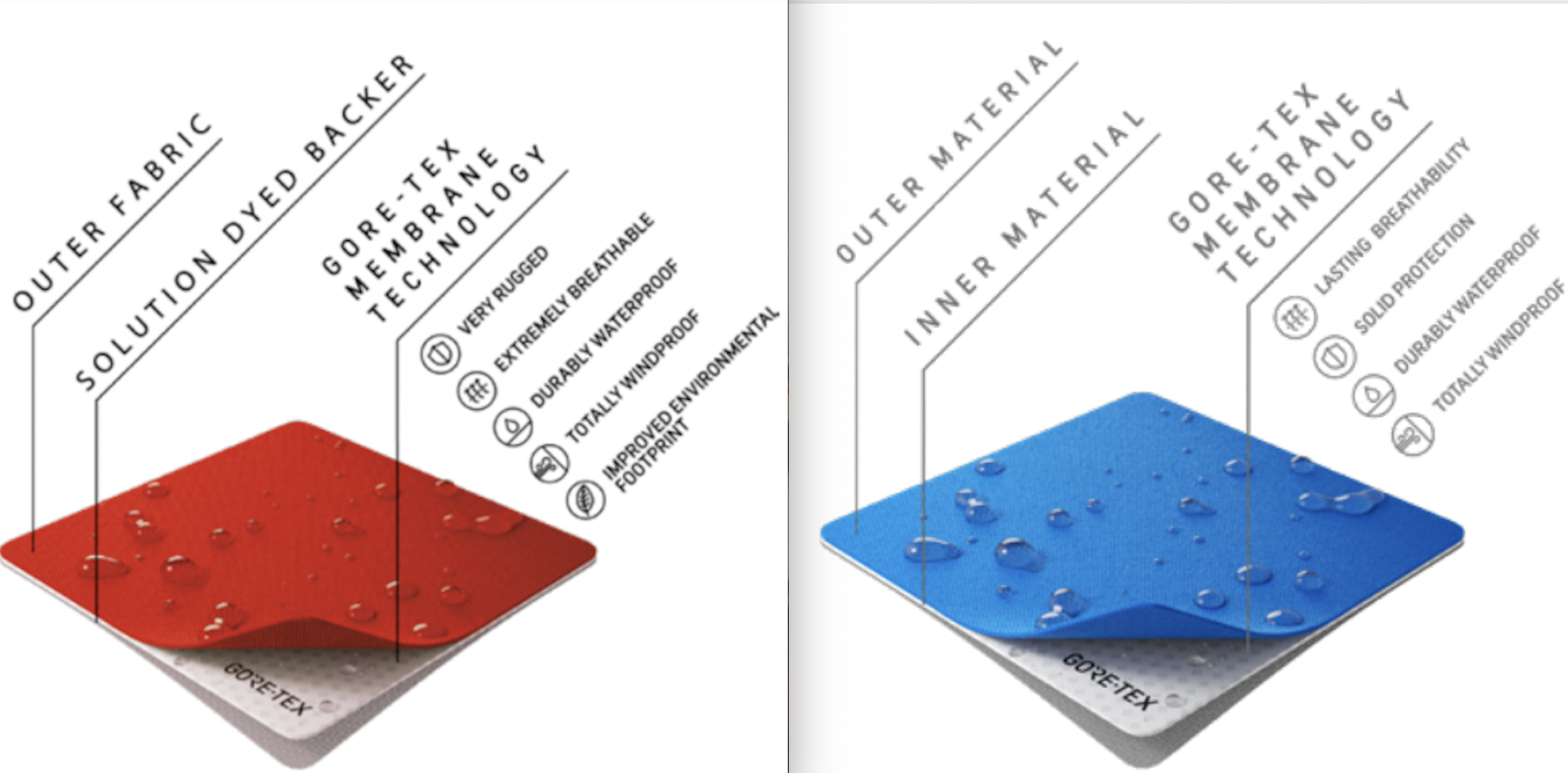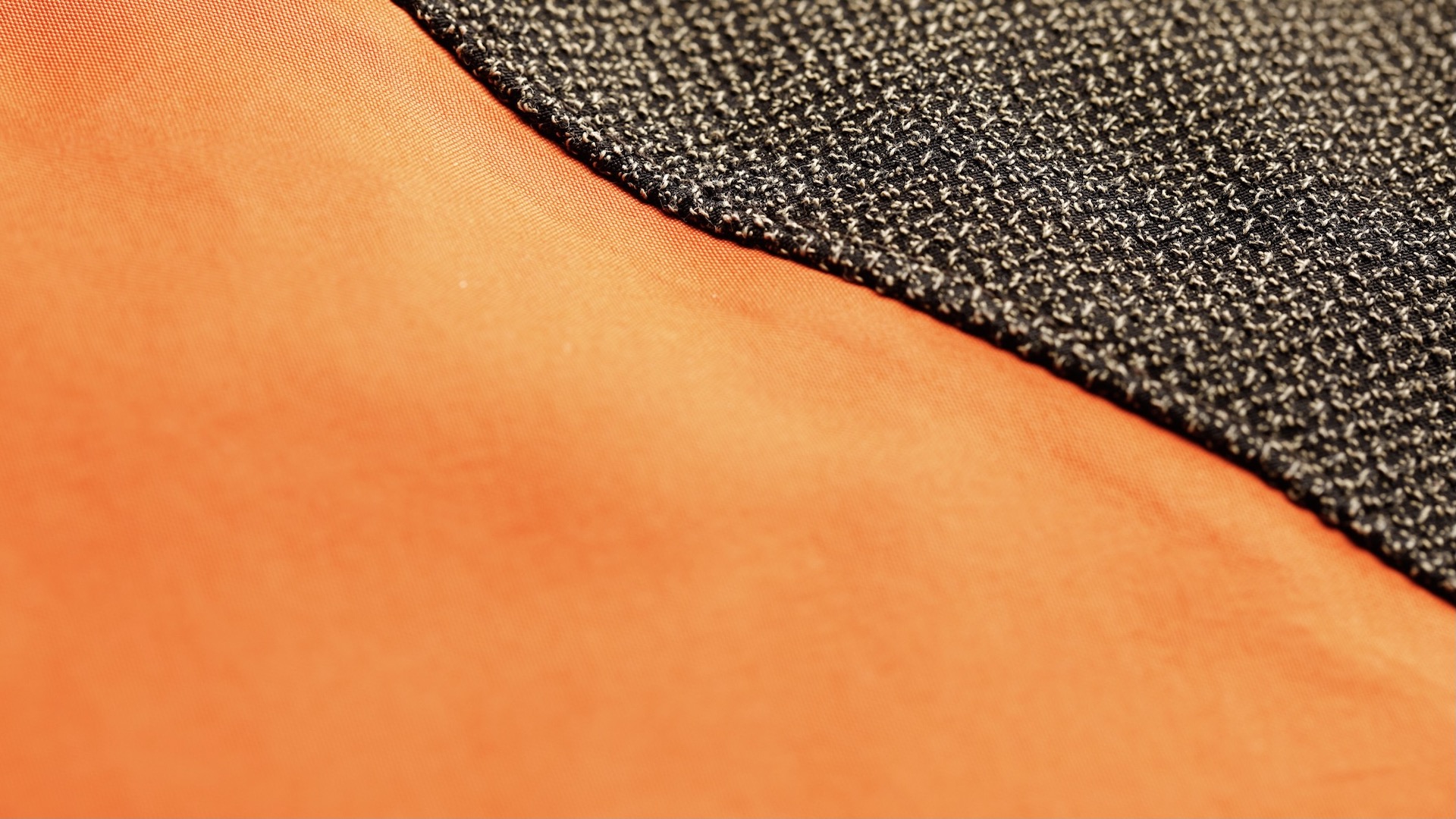Gore-Tex vs Gore-Tex Pro: which is best for outdoor activities?
Your ultimate guide to choosing the right waterproof and breathable Gore-Tex fabric

If you are buying a waterproof jacket for hiking, running, skiing, climbing or any outdoor activity that requires protection from the rain, it’s likely you’ll consider one made of Gore-Tex. While there are other own-brand waterproof fabrics, such as eVent and Páramo Nikwax Analogy, Gore-Tex is widely used across numerous outdoor apparel names, such as Berghaus, Rab, Arc’Teryx, Mountain Hardwear and Salewa.
Take a closer look at Gore-Tex products and you realise that there are a number of different types, including Gore-Tex, Gore-Tex Active and Gore-Tex Pro. In this article we consider the difference between Gore-Tex and Gore-Tex Pro, and which one will be best for you?

Tell me more: what is Gore-Tex?
Gore-Tex is a patented waterproof and breathable fabric membrane. It was invented in 1969 and it is a registered trademark of W L Gore & Associates.
The Gore-Tex membrane is designed to keep out water, while also allowing water vapour to pass to the outside.
But hold on a moment. Surely these two water-out / water-in actions are contradictory?
Well, here’s how it works. The Gore-Tex fabric is made by stretching a type of polytetrafluoroethylene (PTFE), known as expanded PTFE (ePTFE). This is better known by its trademark name Teflon.
The resulting membrane has many thousands of tiny pores. These tiny pores are smaller than even the smallest water droplet.
All the latest inspiration, tips and guides to help you plan your next Advnture!
However, at the same time, water vapour, in the form of our vaporised sweat, is smaller than the pores so it is capable of escaping the inside of the membrane, which is why Gore-Tex is said to have such good breathability.
To make the Gore-Tex fabric that you see in many products such as waterproof jackets, the membrane is sandwiched in a layer between a durable outer material and an inner lining.
It’s the choice of these different layers – and how they are bonded together – that creates the various types of Gore-Tex, including Gore-Tex Pro.
Find out more about Gore-Tex and whether it is 100% waterproof.

Gore-Tex overview
The Gore-Tex membrane is used in 2-layer, 3-layer and Z-liner constructions, as well as insulated garments.
The original Gore-Tex membrane is a three-layer construction. This Gore-Tex membrane comes with a tag reading “guaranteed to keep you dry”.
Gore-Tex fabric is a lightweight and durable membrane that is used in all kinds of garments for many types of activities.
One thing to note: this membrane won’t become breathable until your sweat reaches the inner membrane, which is usually when you need it to start breathing for you anyway.
For most hiking and outdoor activities, Gore-Tex provides good protection from the weather and enough breathability, so long as you don’t sweat excessively.
Gore-Tex in different layers
While the orginal Gore-Tex is three-layer, there is also a Gore-Tex 2-layer, which is created with the membrane and the outer material. The inner lining of the 2-layer version is suspended on the inside but not fixed. Sometimes, an insulating layer is inserted between the membrane and the liner for extra earth.
Meanwhile, as you have read, Gore-Tex 3-layer is made with an outer material and an inner material sandwiching the membrane in the middle. The Gore-Tex 3-layer is meant to be more durable and not as bulky as Gore-Tex 2-layer and you’ll usually find it in more technical hardshell jackets.
Taking the Gore-Tex in another direction, there’s also a Gore-Tex 2.5-layer. The 2.5-layer format is an outer material bonded to the membrane and a thin inner layer attached but not bonded to the inside. This type of Gore-Tex fabric is usually lighter in weight and often described as “packable”.

Gore-Tex Pro
A newer form of Gore-Tex, Gore-Tex Pro was introduced in 2012 and it is aimed at outdoor enthusiasts who need a more robust and durable garment.
Gore-Tex Pro is always made of three layers. The difference between standard Gore-Tex, whether in a two, 2.5 or three layer version, is that Gore-Tex Pro has Micro Grid Backer fabric, rather than polyurethane.
The Micro Grid backer fabric is exclusive to Gore-Tex Pro and it is snag resistance, as well as being more comfortable on the skin or whatever you are wearing as a base layer. Gore-Tex Pro is claimed to be more breathable because of the Micro Grid layer.
In addition, as well as being waterproof and windproof, the Pro doesn’t require any moisture to become breathable.
This means that Gore-Tex pro is usually used in products for activities where wear and tear are an issue, such as mountaineering and skiing.
More Gore-Tex technology
As with most waterproof garments these days, they come with the addition of a Durable Water Repellency (DWR) treatment. However, DWRs are criticised for climate-damaging PFCs. Gore-Tex has a goal to eliminate what they call PFCs of Environmental Concern (PFCEC) by 2023. You can find out more about Gore-Tex’s sustainability pledges.
Some Gore-Tex fabrics also have stretch technology. The aim of the stretch is to offer more freedom of movement.
Different names for Gore-Tex
There are different names given to Gore-Tex when used in garments. These include Gore-Tex Paclite, Gore-Tex Paclite Plus, Gore-Tex Active, Gore Infinium, as well as Gore-Tex Pro, as detailed above.
Gore-Tex PacLite is a lighter fabric that waterproof and breathable, as well as being easier to pack into a small space. The compromise is durability of the fabric. Many people choose Gore-Tex Paclite products for summer activities, especially walking, as well as for waterproof rain pants. See the highly rated Salewa Puez GTX Paclite Jacket in our best waterproof jackets guide.
Gore-Tex PacLite is a fabric that can be easily packed into a rucksack and brought out when needed.
Gore-Tex Paclite Plus fabric offers high levels of waterproofing and breathability, while a 40-denier nylon face (which is completely recycled) offers extra durability, as in the Montane Pac Plus XT jacket.
Meanwhile, Gore-Tex Active is designed to be used by people doing faster or more energetic activities, such as running. The fabric has a balance of breathability and waterproofing but also tends to be much lighter in weight and less durable, too. Like Gore-Tex Pro it is a 3 layer membrane, however as it has a thinner and lighter construction.
Then there is Gore Infinium, which is a highly windproof and weather-resistant softshell membrane but not waterproof. The Infinium membrane sacrifices the waterproofing in other Gore-Tex membranes in favour of a much higher level of breathability.
Gore-Tex waterproof and breathability ratings
Waterproofing is measured as a hydrostatic head rating. Hydrostatic head is the standard used to quantify the level of waterproofness of different textiles. It is measured by applying water pressure to the surface of a fabric and identifying at what point the fabric allows water to seep through.
A rating of more than 20,000mm is usually considered to provide adequate waterproofing in light to heavy rain.
All Gore-Tex fabrics are rated as 28,000mm.
Breathability is rated as the number of grams of water vapour that gets through the fabric per 24 hours. Again, a higher rating is better when it comes to waterproof fabrics because you want vapour form your sweat to escape.
The most breathable type of Gore-Tex is Gore-Tex Pro either with 2 layers or 3. In comparison, the breathability of Gore-Tex Paclite is 15,000 (g/m2/24 hours).
Gore-Tex vs Gore-Tex Pro: which should I choose?
What fabric you choose will depend on your activity. If you plan to be doing a sport that requires a more durable fabric, such as when climbing, mountaineering, skiing or ski-mountaineering, then Gore-Tex Pro is likely to be more robust and longer lasting than other forms of Gore-Tex.
Gore-Tex Pro is highly waterproof and copes with more extreme weather conditions, such as heavy rain, wind and snow – see our Mountain Hardwear Exposure/2 GTX Pro review for an example.
The thicker fabric is better at withstanding, for example, abrasion against rock, pulling a heavy rucksack on and off, and carrying skis over your shoulder.
You will usually find that Gore-Tex Pro products have more durable features such as enhanced shoulder areas.
While the Micro Grid inner of Gore-Tex Pro is breathable, if you are going to be doing a high-energy activity such as running or fastpacking, you will be better choosing a more lightweight Gore-Tex fabric because it will have greater breathability. You will, however, sacrifice a level of durability and weather resistance. Choose Gore-Tex Active or Gore-Tex Paclite for summer sports such as trail running and hill walking.
Price will be a persuader, too, depending on your budget. Garments made of the lighter Gore-Tex Paclite are usually a cheaper than those made of more durable Gore-Tex pro. But it does depend on the range of features in each product.
As you will have read, there are pros and cons of choosing different types of Gore-Tex products and each have their merits.

Fiona Russell is a widely published adventure journalist and blogger, better known as Fiona Outdoors. She is based in Scotland and is an all-round outdoors enthusiast with favorite activities including trail running, mountain walking, mountain biking, road cycling, triathlon and skiing (both downhill and backcountry). Aside from her own adventures, Fiona's biggest aim is to inspire others to enjoy getting outside and exploring, especially through her writing. She is also rarely seen without a running skort! Find out more at Fiona Outdoors.
